Reading Time: 5 Min
Are you looking for the perfect nose shape for your face? Do you know that the shape of your nose is determined by your race or the ethnic group you belonged to? Yeah! The truth is that your nose shape characteristics can point you to where you are from.
In this article, we are going to talk about where a nose comes from and what type of nasal surgery would be suitable for you. So, if you’re curious to know about different nose shapes in different races, follow this clue.

Where does my nose come from?
Is the nose shape determined by race?
Race refers to the groupings of humans according to the common qualities they obtained as they live in a specific region. Different races or ethnic groups tend to demonstrate different specific physical characteristics.
Nose shape, which is one of the facial features, is regarded to vary among different races. It changes and evolves from one generation to the next over the time to adapt to a particular regional environment and climate. That’s why there exists a wide range of different nose shapes among different descents. For example, Europeans have noses with narrow bridges which are seen as an adaptation to the cold climate of where they live.
As explained in a research published in the Journal of PLOS Genetics, the observed differences in nose shapes among people are not a mere result of the genetic shift but are adaptations to a specific climate.
The research suggests that the width of a nose is related to temperature and absolute humidity. Therefore, some aspects of nose shape are indeed driven by adaptation to the local climate. However, this is a simplified explanation of a very complex history. So, we should note that other factors such as gender are, less or more, involved as well.
In summary, the shape of your nose is not only a matter of genetic alteration but also a response to the environment and accordingly a racial trait. Now, let’s have a closer look at different types of nose shapes determined by race.
Nose Job Packages
Surgery + Hotel + Visa
Transfer + Interpreter
Different Types of Nose Shapes in Different Races
As race borders are not clear-cut, we need to define some race categories to be able to describe different nasal shapes in different races.
Therefore, we will focus on five basic race categories which are classified according to their related regions. These include European, Asian, African, American and Mediterranean races. Although the categories do not include all the races, we apply this kind of classification to help you get through them easily.
1) European Race
Europeans have a nose with a narrow bridge. People from north Europe have wide-base noses and protruded tips, while natives to northwest Europe have pointing-up noses. In general, European people have slightly wider and longer noses compared to other ethnic groups in the world.

I’ve got this narrow nose shape from Finland!
2) Asian Race
Asian descent includes a large group of people from east to west Asia. The most typical individuals included in this class are from East Asia. Asians have noses with broad and rounded tips. Augmented nostrils and lack of protruded bridges are typical of Asian noses.
East Asians are marked by their slim noses. They have the smallest noses in terms of surface area. However; east and south Asians have a larger space between their nasal alare (wings of the nose).

Asian girl and maybe the smallest nose ever!
3) African Race
Africans have the widest and most prominent nose compared to other ethnic groups. Their noses are featured with enlarged nostrils, wide and rounded tips and a lack of protruded nasal bridge.
West Africans have the widest noses (widest nostrils), while north Africans tend to have the smallest wide noses. Moreover; the distance between the nasal alare are significantly larger in west Africans as compared to individuals with European ancestry.
On top of the short nasal bones, African skin is much thicker than Asians’ and Europeans’ so it is more liable to scarring. The cartilage might require extra support.

African or American? that’s the question.
4) American Race
African Americans have wide noses with wide or low nasal bridges, flared nostrils and puffy tip. Hispanics also have wide noses but with a hump or a dropping tip, they also have thicker oily skin and a small hump.
Native American noses tend to have depressed root. The sizes are different from one person to another but they have a bit of short base and they are wide.
America also have people of mixed races like American-Mexican who have low roots, drooping tips and normal bridges. Other people who are Native Americans-Europeans have wide tip and thick skin.
5) Mediterranean Race
The Mediterranean race includes people from southern Europe to central Asia. They tend to have noses with a hump in the region between the tip and forehead and a slightly drooping tip.
Among Mediterranean descent, Arabs’ nose shape has something to do with African ancestry. No matter what lies behind this, Arab noses are believed to be similar to African. A rounded fleshy tip is their common trait.
You May Like to See Before & After Photos of Rhinoplasty
You May Like to See Before & After Photos of Rhinoplasty
Does Nasal Surgery Depend on Your Nose Shape?
Located in the center and in front of your face, your nose is the most noticeable facial element. Accordingly, plotting your nose shape would help you find out what type of nasal surgery would fit you.
With the details of the nasal shape for any particular ethnic group, surgeons will be able to offer patients to reach the most desirable cosmetic results. Septoplasty and rhinoplasty are the two dominant nasal surgeries which can be done to give you a healthy aesthetic nose.
Septoplasty refers to the surgical correction of defects and deformities of the nasal septum (space existed between the nostrils), while rhinoplasty is the correction of nose shape including reshaping and resizing the nose.
So, to enhance your nasal shape, rhinoplasty seems to do the trick for different types of nose shapes in different races.
Depending on your nose and the results you want to get out of your surgery, you may be recommended to go for natural, dolly, or semi-dolly nose surgery.
Share this article:
Related Articles
Feel free to express your opinions or ask your questions regarding the article

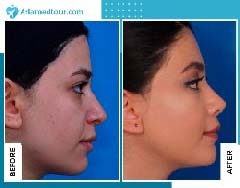
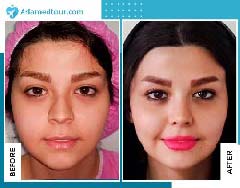
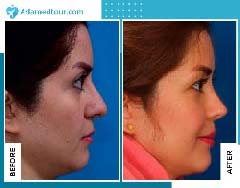

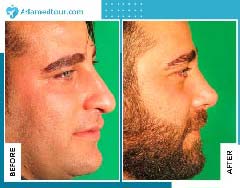
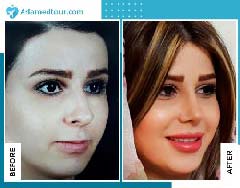
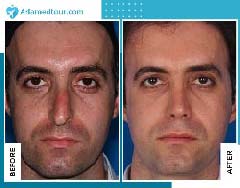


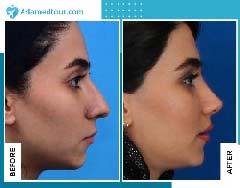




Hello, the information on the blog post is some where inaccurate. Especially the paragraph about American race. American race isn’t a thing unless you’re talking about Native Americans. Do some research on Native Americans. This section seems to refer to African Americans. African Americans for the most part do have noses that are similar to Africans, but African Americans are not fully African, there are great variances in the types of noses that they can have. Most African-Americans have 10 to 25% of European ancestry. So if you can imagine there is a side range of nose types within this community.
Ditto on the mixedness of or integration of euro within American Indians.. my mother had a Scottish surname and my father was mixed at least 4 euros and my schnoz is tiny like a Mongol’s/asian’s(?)’s
No certainty has been mentioned in our article about these items.
Yes, we meant African Americans. And thanks for your valuable feedback.
You have brocken up Europeans into different races but lump Africa into one race under the Black banner. You have said nothing about East Africans , Aboriginal , koisan etc.
a bit ignorant especially in terms of Black and African people. Yes, we do have some wide noses, but so do many South and Southeast Asians…anyhow. Then how does talking about Africans automatically warrant comparison to Europeans when this isnt done with any other group…?
“American race” that is Black? Come on If you want to see True American Faces look for Mexican Natives.
This is ignorant. you’d describe anyone bridge as “normal” sized. There is no normal!
What race have a hump on the brige of the nose
I am also curious about Betty’s question about the hump at the bridge of the nose. A couple of people in my family have it
Dear Betty and Carolyn
The presence of a hump on the bridge of the nose is not determined by a person’s race or ethnicity. It is primarily a result of an individual’s unique genetics and the natural variations in the shape and structure of their nose. People of all races and ethnicities can have a hump on the bridge of their nose, or they may have noses with different shapes and characteristics.
Nasal humps or bumps can be more pronounced in some individuals and less so in others, but this is not linked to their racial or ethnic background. It’s essential to avoid making assumptions about a person’s race or ethnicity based on physical features, as these features can vary widely within and among different racial and ethnic groups.
I think the Mediterranean race is bogus. Most Western Eurasians belong to the same broad racial group and nose shapes over lap. You can find Semitic type noses in British Isles, Central Europeans etc. and upturned noses in Berbers, Turks etc.
Asians do not have the smallest noses, there’s are actually very wide. The girl in the picture likely had plastic surgery. Also there are different types of Africans, not all have the same nose.
Exactly. Filipinos have noses very similar to west Africans. Flat bridges and bolous nose tips.
This nose/race round up is so unnecessary !
What is a “normal” bridge ? Does that make people with flat bridges or very high bridges “abnormal” ??
And is a “sticking up nose” something I can ask for when I have a consult ???!
I’m of mixed ancestry and say I’m black . My nose isn’t flat , wide , bent up , or pointie . I don’t know what kind of nose I have. A lot of people tell me that my nose is typical. Anybody can have any nose shape. So , why are people saying one type of nose belongs to this race or that race ? It doesn’t make sense.
An American is the Native American Race because they are Indigenous to their continents! You already have a category for Europeans and Africans, they are not American at all. So to have an American nose, you can’t one just because you are an Immigrant or a American by Nationality.. Native Americans have the Highest bridges, that are usually higher than the eyebrows, and extends furthest out from root to tip. They are usually thin bridged and narrow nostrils. European and Africans already have their categories, and do not belong in the American category!!
How about Yemeni people what type of nose do they have,You said NOTHING about them or middle Easter
Hispanic is NOT a race.
Asian…which asian?
This post push subtle white supremacy racism. What is a “normal nose bridge?” Who and what defines normal? By whose standard? By default, this means noses that do not conform are abnormal. In addition, every race has every type of nose represented. The arrogance and ignorance of generalizing specific phenotype features to one group of people is again misleading. The writer’s world view and experiences are limited and language used is questionable. There is no universal normal nose. What is attractive and desirable to one person may not be to another. Europeans force their standards of beauty on the world and commodify and exploit the beauty of difference when it suits them – like elevating tanned skin, or craving bigger lips or behinds – while denigrating and diminishing those who are born with these natural features. Stop making up the rules as you go along. White supremacy is the most successful scam in the history of humanity.
Funny how people automatically stereotype all Europeans as white, and all Africans as black ? Just because a certain geographic location today has a certain type of race, doesn’t mean that five hundred years ago it was the same way in the same exact location. From then until now it has changed drastically. Surprisingly no-one here has mentioned the fact that many of the original Mayan’s and Aztec’s and other Tribes of so called Native Americans were actually so called black people too ? His-story taught us a bunch of lies and that is not our true story. The veil is thinning and the truth is becoming easier to see.
Arab noses have nothing to do with African noses. Arab noses look different from African noses. And most Arabs are NOT mixed with Black people.
This comment is as ignorant as the main post.
You clearly know nothing about Africa.
We have Algerians, Egyptians, Moroccans and Tunisians (North Africans) who ALL are considered Middle Eastern Africans.
We have east Africans – Somalians, Eritreans, Ethiopians, Sudanese and they all have similar features and hair to Arabs. Their noses are even more European looking. Arabs have Greek looking noses.
Then west Africans who have your stereotypical black people features and South Africans with tiny noses.
Arabs are not mixed with black, but many Africans are mixed with Arab and have similar features. Be wise rather than being offended.
You describe the white European nose compared to the Arab and African nose! Oh, and you left the Jews out. This is just ignorant!
Did conquistadors cause self mutalation in Aztec or Inca women’s noses?
dear Curt…thanks for your comment I have to say based on historical records, there is no direct evidence that conquistadors caused Aztec or Inca women to mutilate their own noses.
However, the question connects to a broader, documented truth:
* Nose mutilation was a known punishment imposed by the Spanish on enslaved Indigenous people who tried to escape. This was a brutal brand to identify and punish runaways.
* The Spanish conquest inflicted massive trauma, leading to widespread despair, suicide, and disease. While specific acts of self-mutilation by women are not recorded, such extreme psychological trauma makes individual acts of despair plausible, even if they are not verified by historical sources.
So…conquistadors did mutilate noses as a punishment, but there is no evidence they caused a practice of self-mutilation. The conquest’s violence, however, created an environment where such extreme acts of despair were conceivable…
I found the article informative but also racist. People of African decent do not have thicker Skin!!! Just thicker features. And skin is skin it reacts the Same and no less response to sensations!
dear Judy…thanks for your comment, your concern about racism is acknowledged, and the universal nature of skin function is affirmed. However, scientific evidence confirms that skin thickness does vary. This is a neutral biological trait, not a basis for discrimination.
Ethnic Variation: Studies show that skin of African descent often has a thicker and more compact dermis compared to skin of European descent. Asian skin also shows distinct measurements.
Individual & Anatomical Variation: Crucially, skin thickness varies greatly across different parts of the same person’s body (e.g., eyelids vs. palms) and between all individuals, regardless of race.
Clarifying “Thick Skin”: The term refers to the dermis (the structural, deeper layer), not the epidermis (the outer, protective layer), which shows minimal difference. This is separate from “features” like lip shape or nose width.
Clinical Relevance: These differences are medically important, influencing factors like scarring (e.g., higher rates of keloids in thicker dermis) and the response to certain cosmetic procedures.
So…Variation in skin thickness is a demonstrable, natural human trait, similar to differences in hair or height. Recognizing this is not racist; it is a matter of factual human biology with important practical applications in medicine.
This article really made me think! I’ve always noticed how people from different regions seem to have unique ethnic noses — for example, the classic British nose or Scottish nose shape often looks narrower compared to Mediterranean or Middle Eastern ones. Are these differences purely genetic, or do environmental factors play a role too?
I agree with you Hannah.this is a question we have all faced! The distinct nasal shapes observed across different populations are the result of both genetic and environmental factors working over thousands of years. The foundation of ethnic nasal variation is largely environmental adaptation to climate. However, the specific traits we see today were also shaped by random genetic mutations and cultural preferences within isolated populations over deep time
As a Black man, I often hear stereotypes about why do black people have big noses or why do black people have wide noses, which can be frustrating. I think articles like this can help people understand that our African nose shapes are not “big” — they’re just different.
The idea that Black people have “big” noses is a mischaracterization rooted in stereotype, not science dear. A more accurate and respectful description is that many people of African descent often have noses that are broader or have a wider nasal base and nostrils. This is one of many natural human nasal shapes, not a deviation from a norm.
From an anatomical standpoint, there’s a fascinating range in ethnicity nose shapes — for instance, East Asian nose structures often have a flatter bridge and shorter nasal bones, while European nose profiles are more projected. These traits have no impact on function, only on appearance.
This is an interesting topic you brought up dear…different ethnic groups often exhibit distinct nasal shapes, such as the flatter bridges common in East Asian noses compared to the more projected noses seen in many European populations. The difference in profile is often due to the relationship between the nasal bones and the cartilages, as well as the root of the nose being set at a different angle. These variations are aesthetic and do not affect respiratory function.
I recently traveled through Europe and was amazed by how even within one continent, there are so many European nose types — from the sharp British nose to the slightly upturned Scottish nose shape. Out of curiosity, which ethnicity is known to have the smallest nose in the world?
There is no single ethnicity with the “smallest” nose, as “small” is subjective and nasal features vary greatly within every population Nazanin.
However, studies note that some East Asian and Indigenous American populations, on average, often have noses with a lower nasal bridge and less projection, which can create a softer, less prominent appearance that might be perceived as smaller in some dimensions…
I was told I have an upturned nose ethnicity typical of parts of Northern Europe, but I’m Middle Eastern. It’s interesting how ethnic noses overlap due to migration and mixed ancestry.
That’s right and thanks for this precise example you wrote. Migration from/to different countries is one of the factors that changes physical characteristics, like nose shape (over time and changes in genetics). Your example refers to this very issue. We often consider a “common” characteristic for a group, such as blue eyes in Europeans, while this same characteristic may be found and increasing in another geographical region thanks to centuries of shared ancestry and gene flow…